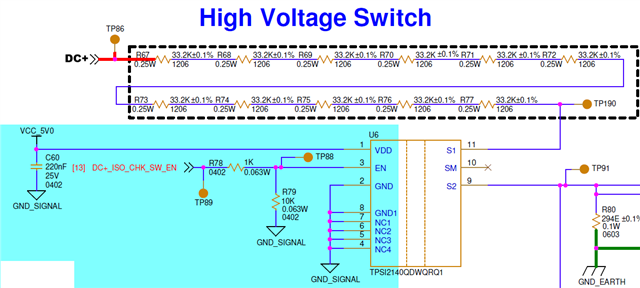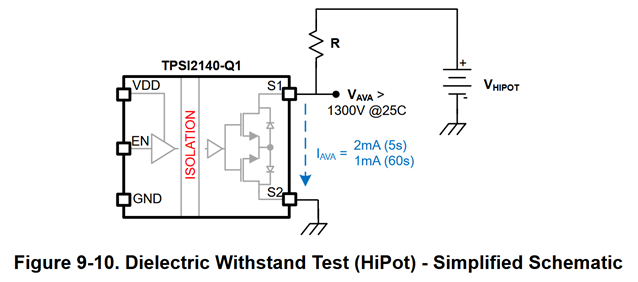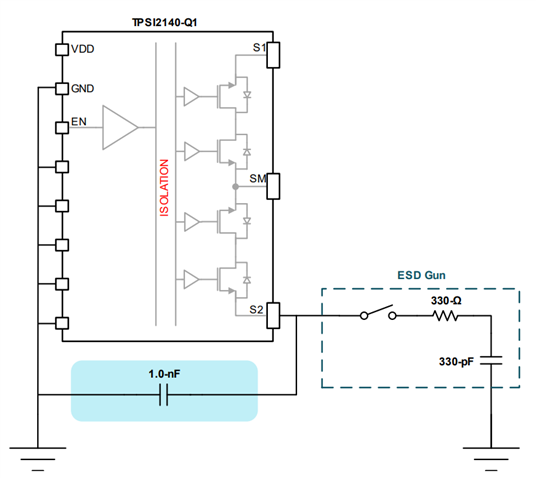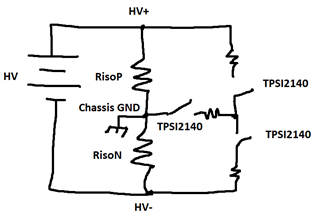Other Parts Discussed in Thread: TIDA-010232
Tool/software:
Hi Team,
What is the absolute maximum voltage rating of the device that can handle between S1-S2?
Find attached snapshot of our resistor network circuit with TPSI2140, by applying 3kV we have observed 13mA of leakage current.
Is it due to the leakage current of the internal MOSFETs?
Please let us know for 3kV hipot signal how much will be the voltage between S1-S2, in our reference circuit. As absolute maximum data is not provided in the datasheet.
Regards,
Parth Bhavsar





